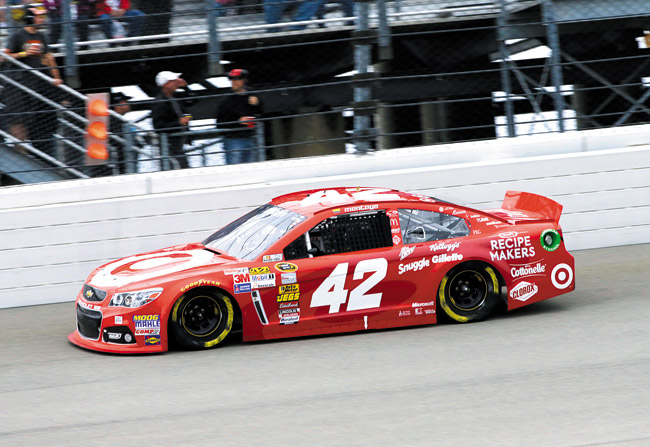Driver Change Good For NASCAR
Juan Pablo Montoya did a favor for North American racing when he left Formula One for the crowded, high-banked turns of NASCAR. The Colombian brought with him seven F1 wins, including Grand Prix victories in both Italy and Monaco, and 11 CART (aka Indy Car) wins. At the age of 24 he won the 1999 CART championship and a year later the Indy 500.
Montoya was marketing gold.
He was talented, good-looking, South American and brimming with international experience. By coming to what most Europeans consider a minor league of motor sports, Montoya showed NASCAR’s ability to draw top international talent.
But after eight years, 244 starts and just two victories, he is leaving NASCAR for the more comfortable ovals and road tracks of open-wheel racing.
Montoya is a gift that keeps on giving.
Had he entered NASCAR, scooped up victories and departed, he would have confirmed what many believe: that racing on an oval track is infinitely easier than the twisting tracks of road course surfaces. Now that can’t be said.
NASCAR may be harder. That’s what Montoya has said.
For better or worse, Formula One is a technician’s race. It’s the ultimate in automotive technology, boasting half-a-billion-dollar budgets and on-the-fly vehicle adjustment. Even the steering wheel costs north of $50,000.
NASCAR is all about the drivers. The cars are tough, easy to maintain and wonderfully simple. During his CART and F1 days, Montoya rode around in a modern-day space shuttle, filled with every gadget an engineer could think of.
In his No. 42 Earnhardt-Ganassi Chevy, he didn’t even have a gas gauge. Mid-race tweaks are not downloaded but told to crew chiefs, who have to figure out adjustments based only on what the driver is feeling. Then there is the bumping and drafting that just doesn’t happen in Formula One.
Will the European driving press take notice and give NASCAR its due? They already have, even if they hadn’t noticed.
In the third season of Top Gear UK, (it may have been the fourth season, as I have been watching past episodes and getting confused), host Jeremy Clarkson complained that technology was taking F1 away from the drivers, and joked Formula One should pay them 20,000 pounds a year with bonuses for every pass. What he was asking for was more NASCAR.
Take that, Europe!
Owner Chip Ganassi had determined Montoya would not be retained, so Montoya went job hunting and ended up in the best possible position. It just happened to with his current boss’s biggest rival, Roger Penske.
It makes sense for both sides. Montoya is at his best in open-wheel racers. He also moves from a two-driver team to one of racing’s most successful organizations. The change also allows Ganassi to find a second driver who is more apt to win on NASCAR’s unique tracks.
Montoya still has eight races to go with Ganassi and says they part as friends. It remains to be seen how the Penske newcomer will handle being dropped into a full-blown IndyCar feud.
Penske driver Helio Castroneves, the current points leader, and Ganassi driver Scott Dixon are battling for the IndyCar season title. Castroneves’s teammate Will Power and Dixon are in a battle of their own. Dixon was penalized when his car contacted one of Power’s crew members. A week later, the cars collided, sending Dixon out of the race.
Damn, racing is fun.






